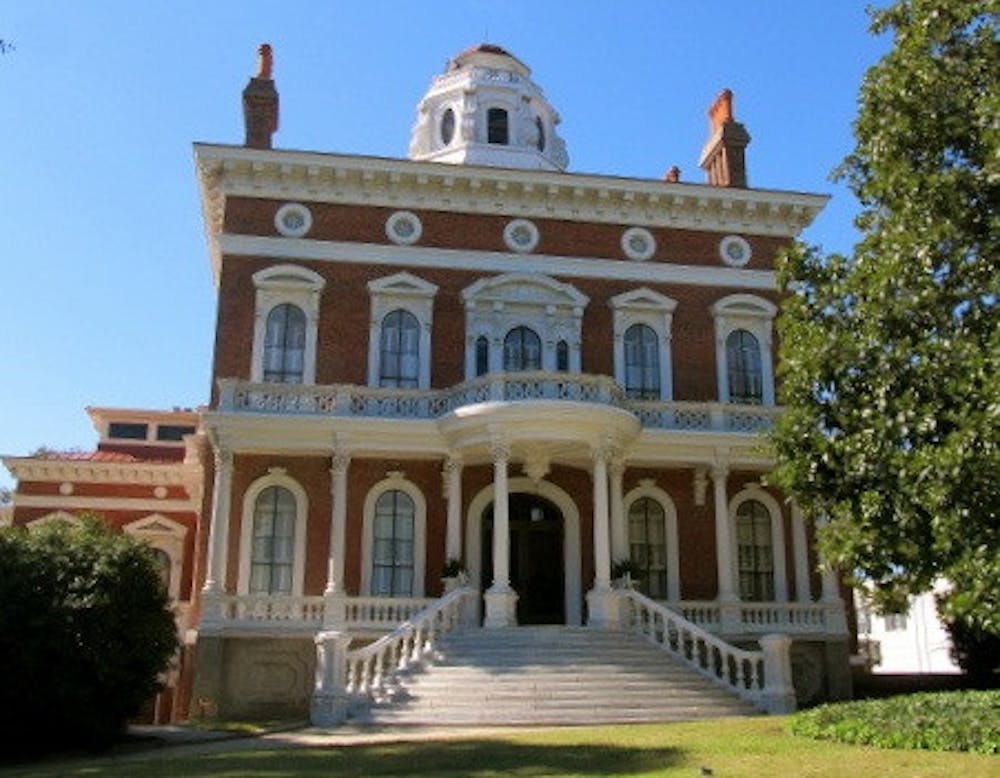Macon is an old city rich with history. Four locations in particular can be deemed vital in terms of their value and significance.
The birthplace of Macon resides at Fort Hawkins, built in 1806 as an official U.S. Army Fort and Indian Factory for trading and meeting with Native Americans.
As U.S. Army and Georgia Militia Headquarters, Fort Hawkins was the most crucial site in the Southeastern Theater during the War of 1812. Only a replica of the original blockhouse remains while the rest of the site was covered by a couple feet of thick dirt and clay.

In recent years archeologists have uncovered hundreds of artifacts and original groundwork while excavating the site, which for a time had a school on its premises. Now the fort is a blossoming tourist attraction, hosting events such as Veterans Day Open House and its Annual Frontier Fort Christmas. Currently the site has free public programs every weekend with more information located on its website.
Fort Hawkins volunteers hope for the site to become a self-sustaining regional and national educational institution that will also be a proactive, productive, positive community resource, economic generator, and new source of local and national pride.
“This is juicy history here. We want to keep activities here,” said Marty Willett, FHC Press Officer & Project Coordinator.
Right down the street from Fort Hawkins is another, far older and more rugged location. The Ocmulgee National Monument is located on the eastern edge of Macon and according to TripAdvisor is the number one attraction for tourists. The site has many sacred Native American structures, including several massive mounds and a recreation of an Earthlodge. The Great Temple Mound is the largest Mississippian mound on the Macon Plateau and is quite a sight to behold. The park flourishes in history that extends over 10,000 years. For walkers and joggers the park has many tracks through the wetlands and a river trail.
“Macon is rare. It’s not usual that you would have two places, Fort Hawkins and Ocmulgee, so available,” said Willet.
According to patrons the spring and fall are the best seasons for visiting the park, which has free admission. The first two weekends in November will honor Native American Heritage Month by hosting its own Native American Games. The park itself is commemorating its 75th anniversary in December.
If you’re not in the mood to travel very far, then head down to Rose Hill Cemetery on Riverside. It was established in 1840 and is on the National Register of Historic Places. Designed by Simri Rose, it was intended as a site to visit and as a gathering place for Maconites and visitors to the city.
The cemetery extends over an eye-catching landscape of hills and trees. Roads built for vehicles provide a variety of routes over the entire cemetery with a creek and waterfall to break up the demure within the landscape.
Most notably, the cemetery holds the graves of the Allman Brothers Band guitarist Duane Allman and bassist Berry Oakley who apparently visited the cemetery for artistic inspiration during their musical years.
A section was also marked off as Soldier’s Square and has lain to rest over 600 Confederate soldiers. Monuments of generals and other significant individuals of war and society can be found about the cemetery.
The youngest of the four locations is the Hay House built in 1855. The 18,000 square foot mansion spans four levels and is crowned by a three-story cupola. William Butler Johnston commissioned the Italian Renaissance Revival mansion and has since been lived in by two other families, the Feltons and the Hays. In 1977, ownership of the house was formally transferred to the Georgia Trust for Historic Preservation.

Students can pay an inexpensive $5 to tour the entire level of the houseand it is well worth it. The architectural design is unlike many homes seen in Georgia and is unique in glamour and style. Over 15,000 people visit the house each year.
The guided tours present an opportunity to learn about the significance of the homes both in its architecture and technological advances. Guests also hear a social history on the three families that resided in the home providing over 150 years of stories between them.
Historic Macon landmarks worth seeing





